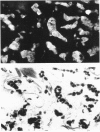Abstract
Secretory component (SC) has been demonstrated to be produced by both normal and malignantly transformed glandular epithelial cells. By an indirect immunofluorescent technique, this study surveys tumors of varied cellular origin in order to determine the reliability of SC as a marker for tumor cells derived from glandular epithelium. Both primary and metastatic tumors of glandular epithelial origin demonstrated SC fluorescence, while nonglandular epithelial tumors did not. This observation was extended to live single-cell preparations, which demonstrated intense cell-surface fluorescence only when glandular epithelial tumors cells were examined. Additionally, fixed, cytocentrifuged, single-cell preparations of glandular epithelial tumors demonstrated cytoplasmic SC fluorescence. When breast carcinoma was examined, all cases demonstrated SC, regardless of the degree of differentiation. This assay appears to have useful clinical application in that the finding of SC provides indication of the glandular epithelial origin of a malignantly transformed cell.
Full text
PDF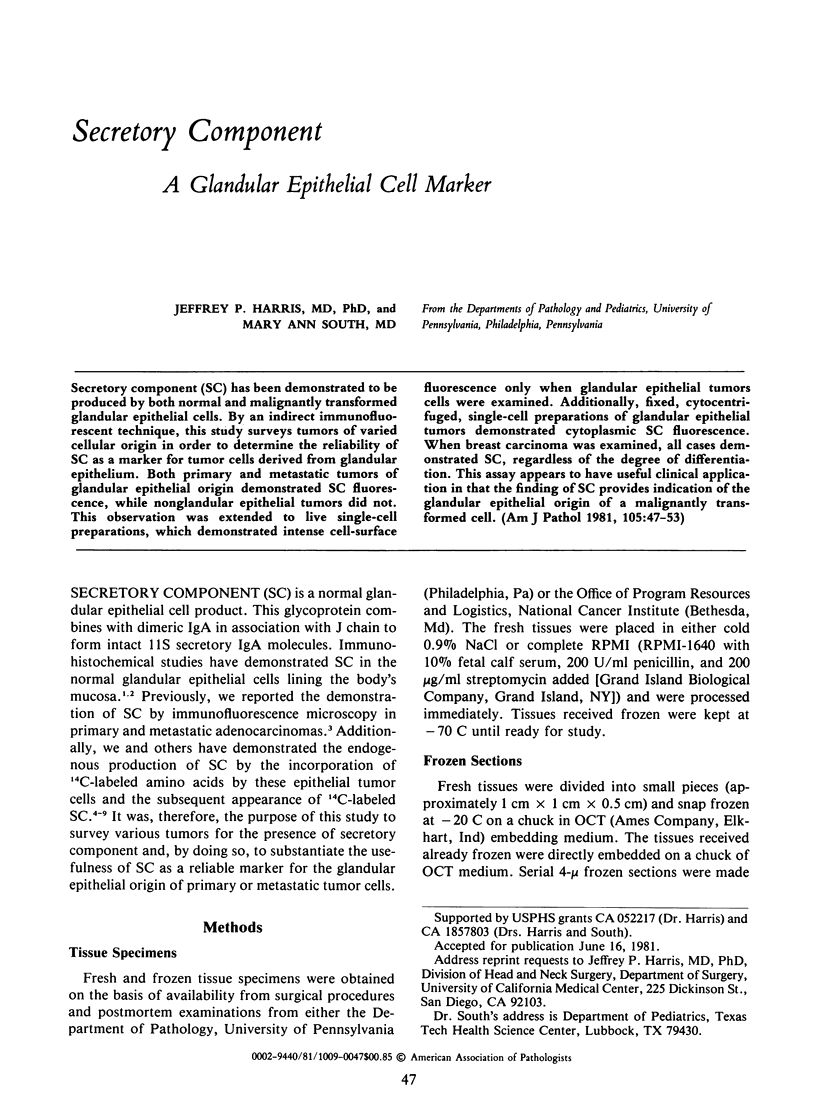
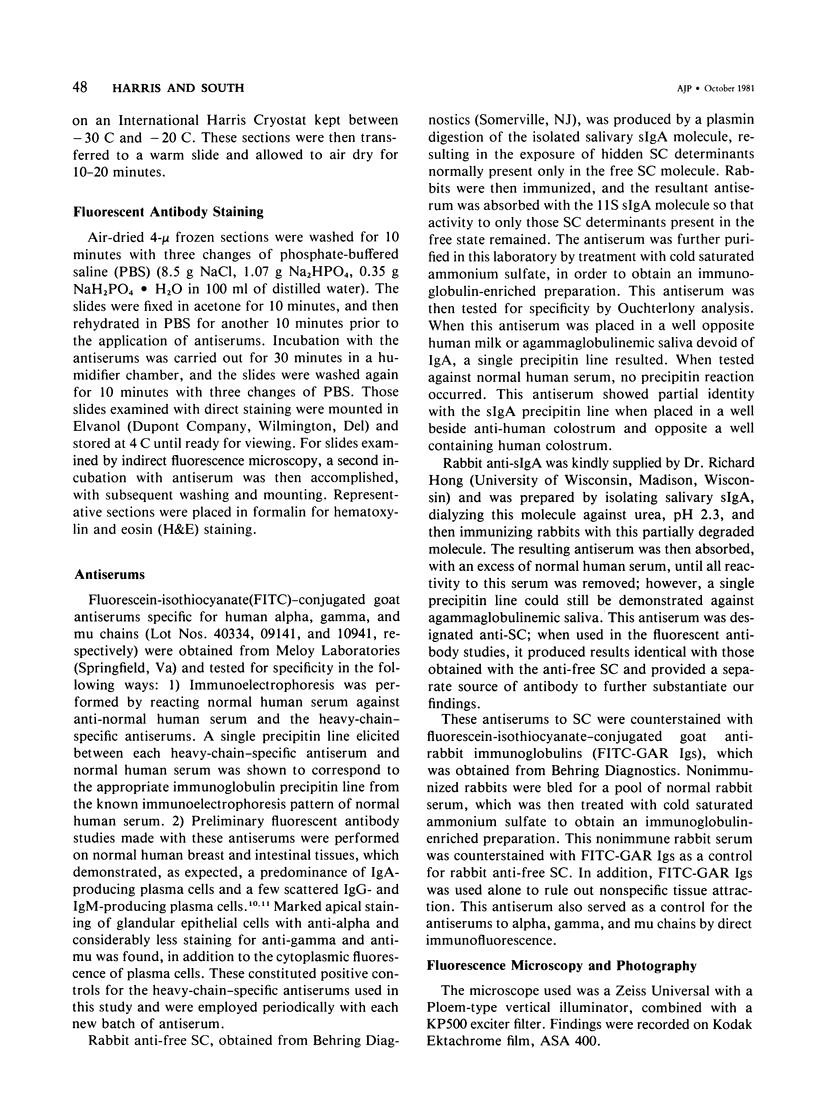
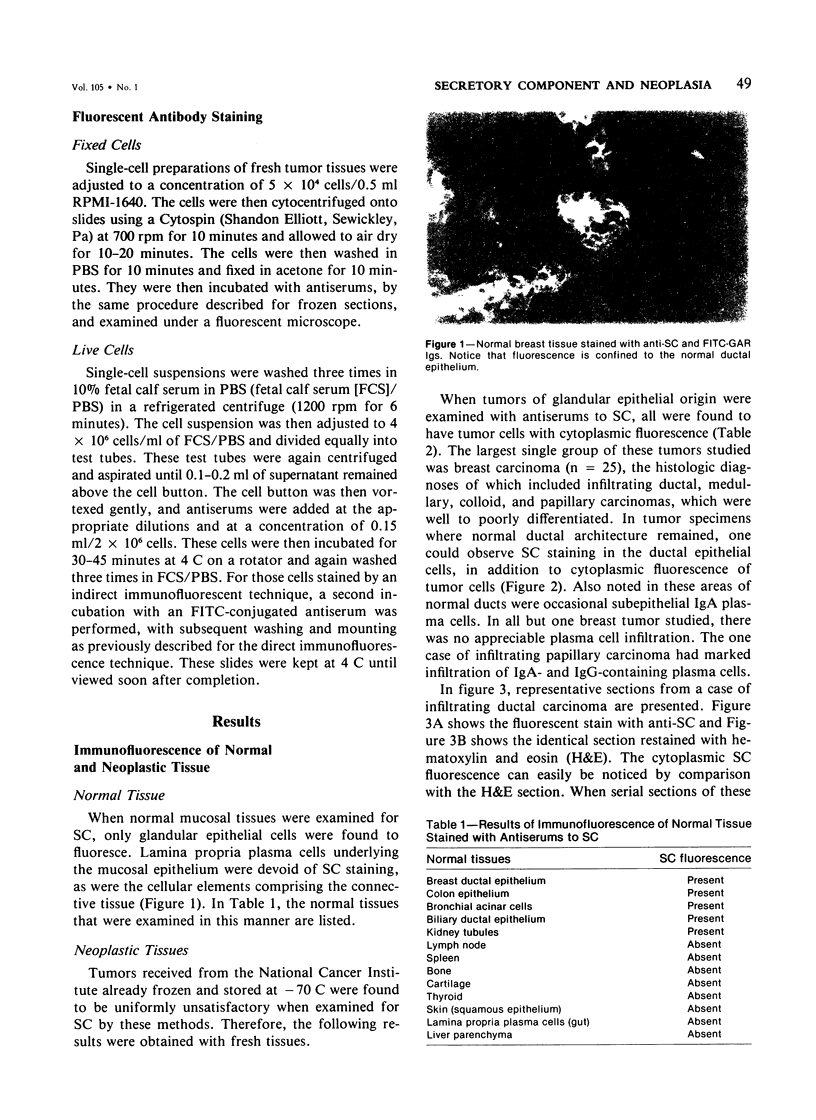
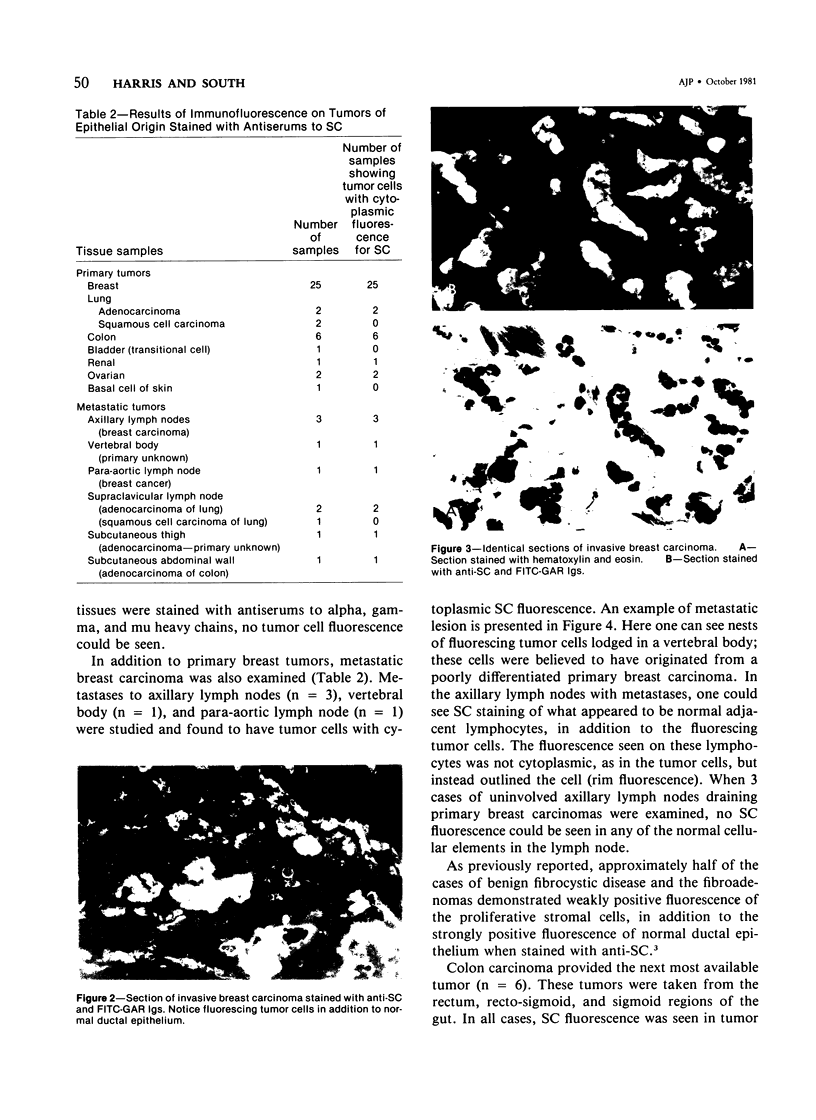
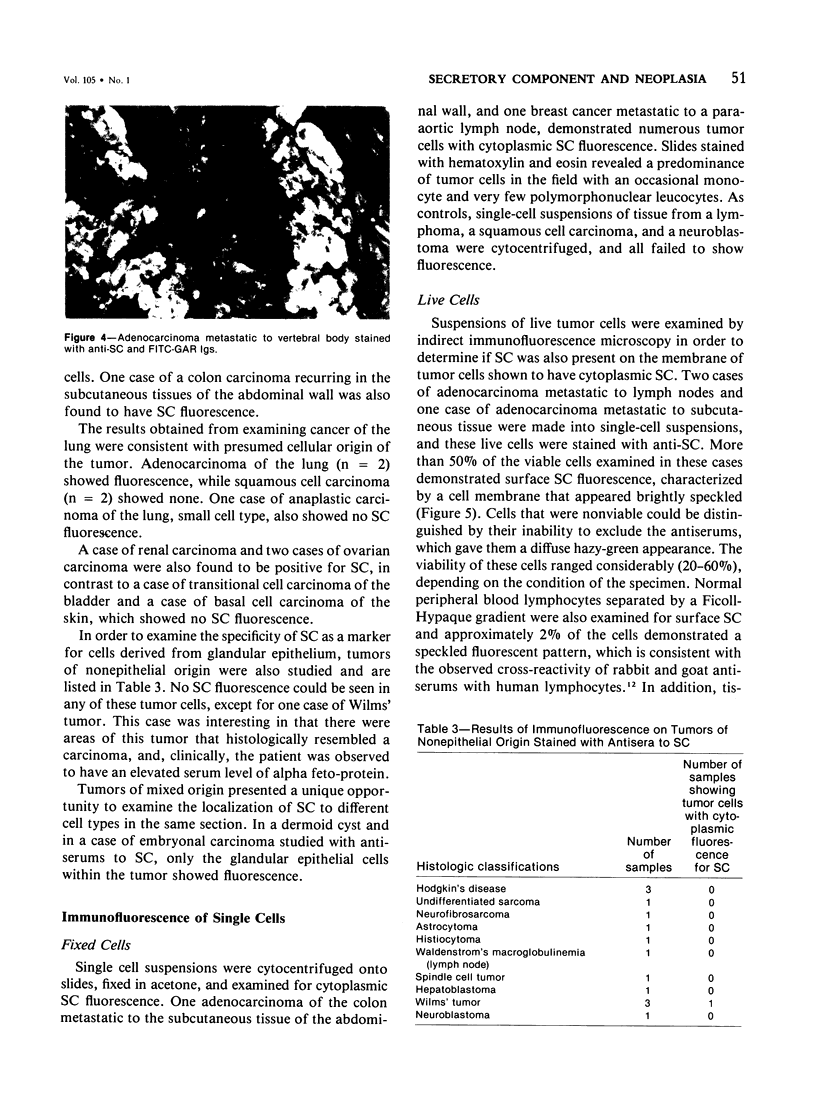
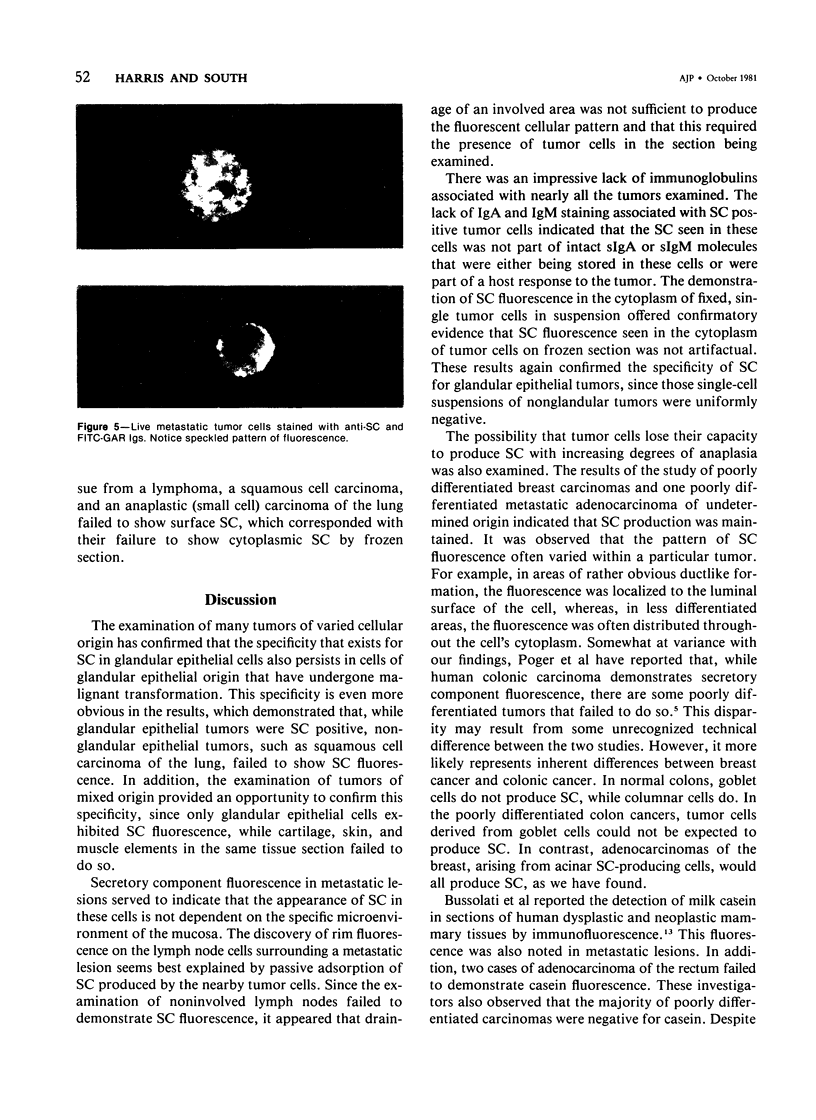
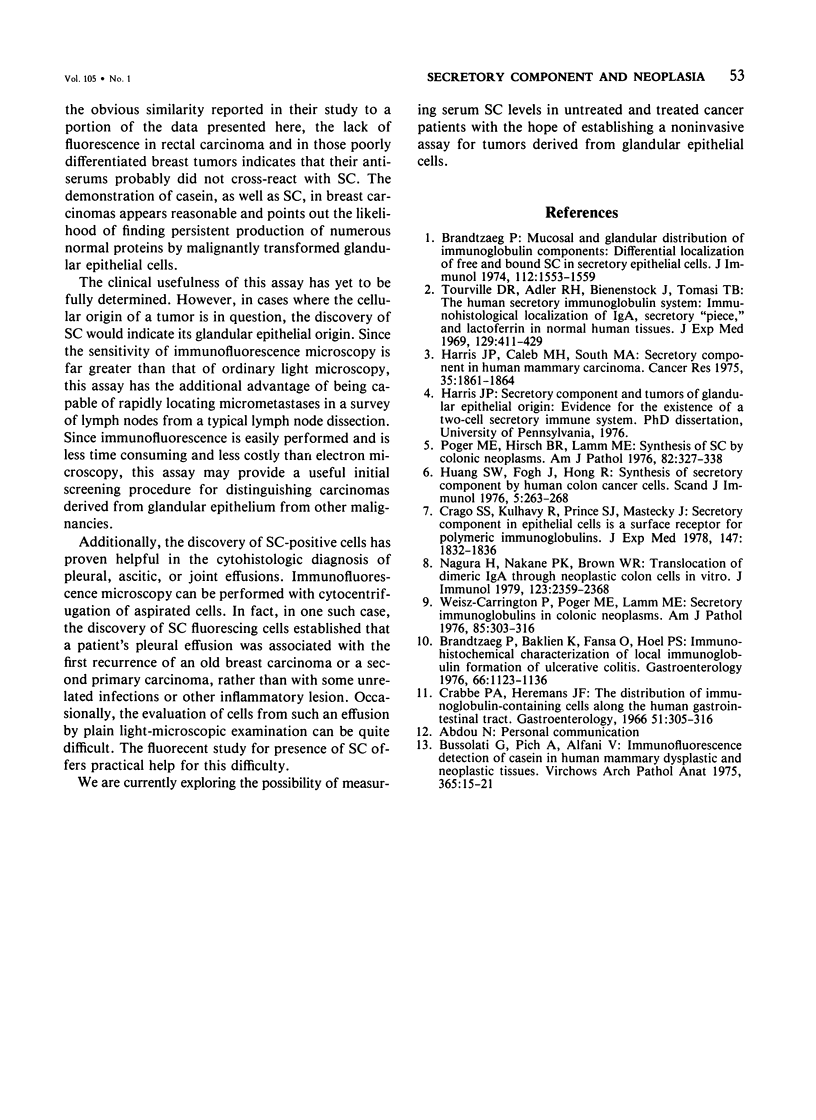
Images in this article
Selected References
These references are in PubMed. This may not be the complete list of references from this article.
- Brandtzaeg P., Baklien K., Fausa O., Hoel P. S. Immunohistochemical characterization of local immunoglobulin formation in ulcerative colitis. Gastroenterology. 1974 Jun;66(6):1123–1136. [PubMed] [Google Scholar]
- Brandtzaeg P. Mucosal and glandular distribution of immunoglobulin components: differential localization of free and bound SC in secretory epithelial cells. J Immunol. 1974 Apr;112(4):1553–1559. [PubMed] [Google Scholar]
- Bussolati G., Pich A., Alfani V. Immunofluorescence detection of casein in human mammary dysplastic and neoplastic tissues. Virchows Arch A Pathol Anat Histol. 1975;365(1):15–21. doi: 10.1007/BF00439282. [DOI] [PubMed] [Google Scholar]
- Crabbé P. A., Heremans J. F. The distribution of immunoglobulin-containing cells along the human gastrointestinal tract. Gastroenterology. 1966 Sep;51(3):305–316. [PubMed] [Google Scholar]
- Crago S. S., Kulhavy R., Prince S. J., Mestecky J. Secretory component of epithelial cells is a surface receptor for polymeric immunoglobulins. J Exp Med. 1978 Jun 1;147(6):1832–1837. doi: 10.1084/jem.147.6.1832. [DOI] [PMC free article] [PubMed] [Google Scholar]
- Harris J. P., Caleb M. H., South M. A. Secretory component in human mammary carcinoma. Cancer Res. 1975 Jul;35(7):1861–1864. [PubMed] [Google Scholar]
- Huang S. W., Fogh J., Hong R. Synthesis of secretory component by human colon cancer cells. Scand J Immunol. 1976;5(3):263–268. doi: 10.1111/j.1365-3083.1976.tb00277.x. [DOI] [PubMed] [Google Scholar]
- Nagura H., Nakane P. K., Brown W. R. Translocation of dimeric IgA through neoplastic colon cells in vitro. J Immunol. 1979 Nov;123(5):2359–2368. [PubMed] [Google Scholar]
- Poger M. E., Hirsch B. R., Lamm M. E. Synthesis of secretory component by colonic neoplasms. Am J Pathol. 1976 Feb;82(2):327–338. [PMC free article] [PubMed] [Google Scholar]
- Tourville D. R., Adler R. H., Bienenstock J., Tomasi T. B., Jr The human secretory immunoglobulin system: immunohistoligical localization of gamma A, secretory "piece," and lactoferrin in normal human tissues. J Exp Med. 1969 Feb 1;129(2):411–429. doi: 10.1084/jem.129.2.411. [DOI] [PMC free article] [PubMed] [Google Scholar]
- Weisz-Carrington P., Poger M. E., Lamm M. E. Secretory immunoglobulins in colonic neoplasms. Am J Pathol. 1976 Nov;85(2):303–316. [PMC free article] [PubMed] [Google Scholar]





